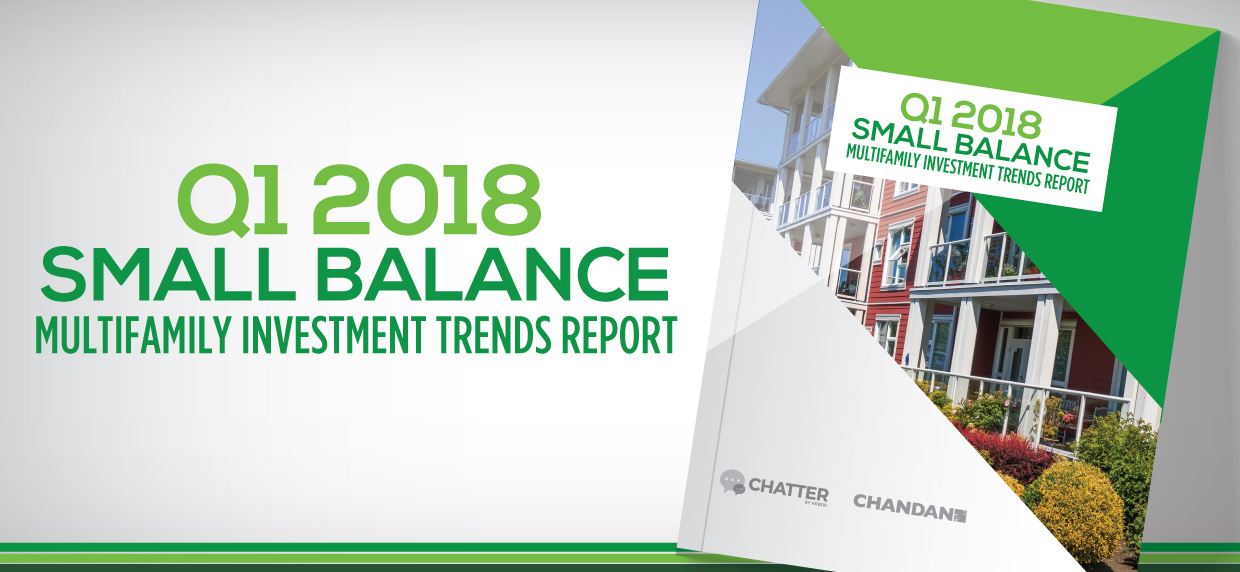The multifamily sector is well-positioned to absorb the shock of rising interest rates. Bolstered by a supply/demand mismatch, multifamily has a solid foundation to support growth during the Federal Reserve’s monetary tightening cycle.
Small Apartment Buildings Vital for Urban Workforce Housing

Household income data underscores the importance of small apartment buildings in maintaining workforce housing options, and thereby, the economic dynamism of cities.

Small Balance Multifamily Investment Snapshot — Q1 2018

Here’s a quick look at the small balance multifamily finance and investment benchmarks for Q1 2018.

Small Multifamily Assets Showing Higher Productivity in Secondary Metro Areas

Apartment properties show rent increases across all metro segments; while growing steadily in the largest metros, secondary markets are now experiencing higher rent growth in the small asset space.

US Small Apartment Properties Show Steady Increase in Average Monthly Rents

The ongoing inventory consolidation in the multifamily market is resulting in higher quality assets. This is illustrated in the steady annual increases in rents, especially in small apartment properties. Average Rent Levels Across Asset Type The current consolidation in the multifamily market, characterized by steady large building inventory expansion and a slight contraction in small building units, is helping retain better performing assets with higher rents. The above contraction in small building units comes in the backdrop of rising competition between large apartment buildings and single-family homes for Millennial rental demand. As shown below, based on the latest data from the American Community Survey (ACS), the average monthly gross rent (total housing expense) of small apartment property units reached around $1,040 in 20161. This is an increase from $1,000 in the previous year. In comparison, US average monthly gross rent in large building units increased from $1,200 in 2015 to $1,240 in 2016. At the other end of the market, the rent for single-family homes was slightly above that of large buildings. Duplex-quadruplex units were the least expensive rental option Read the full article…

Q1 2018 Small Balance Multifamily Investment Trends Report

Buoyed by the favorable economic outlook, a robust labor market and higher inflation, small balance multifamily lending in Q1 2018 was $44.5 billion, improving on Q1 2017.

Dallas Multifamily Market Remains Strong Through Q1 2018

After standing out as one of the stronger performing markets in the country during 2017, Dallas continued its momentum during the first quarter of 2018. Rent growth and investment activity remained strong, while vacancy rates held at historically low levels despite a high volume of new supply added to the market. Rental Market According to data from Reis, the average asking rent in Dallas finished Q1 2018 at $1,141/unit. This figure is up 0.9% since the end of 2017, and has risen in every quarter since year-end 2009. Year-over-year asking rent increased 5.6%, which ranked 15th nationally. Rent for Class A properties increased 5.4% year-over-year, while the Class B/C average rose 4.4%. Reis forecasts overall asking rent to grow 4.7% during 2018 and slow to 1.9% by 2022. We observed previously that Dallas led the nation with 17,200 new multifamily units completed during 2017. Although demand has been strong, it has not quite been able to keep up with the pace of new supply, as absorption totaled only 11,100 units for the year. That trend continued in the first quarter, Read the full article…

L.A. Multifamily Fundamentals Remain Strong, Sales Volume Up Slightly in Q1 2018

At year-end 2017, we took a look at the Los Angeles multifamily market. We noted then that Los Angeles stood as one of the stronger markets nationally, with low vacancy and high investment volume. As we look at results from the first quarter of 2018, market fundamentals remain strong, although signs of weakness continue to be observed.

Older Households Make Gains in Small Asset Unit Demand, Millennial Households Form the Largest Share

Complementing the recent review of household composition and living arrangements, a closer look at householder age indicates the steady graying of small asset apartment demand.

Families with Children Dominate Single-Family Rental Demand, Single Renters on the Rise in Apartments

A closer examination of household composition, including single renters and families, as well as living arrangements reveals distinct patterns across rental asset classes.

With Rising Incomes, Renter Cost Burden Shows Slight Improvement for Now

While rental housing costs remain high, the accelerated improvements in the U.S. economy have resulted in incomes that are rising slightly faster than rents.


